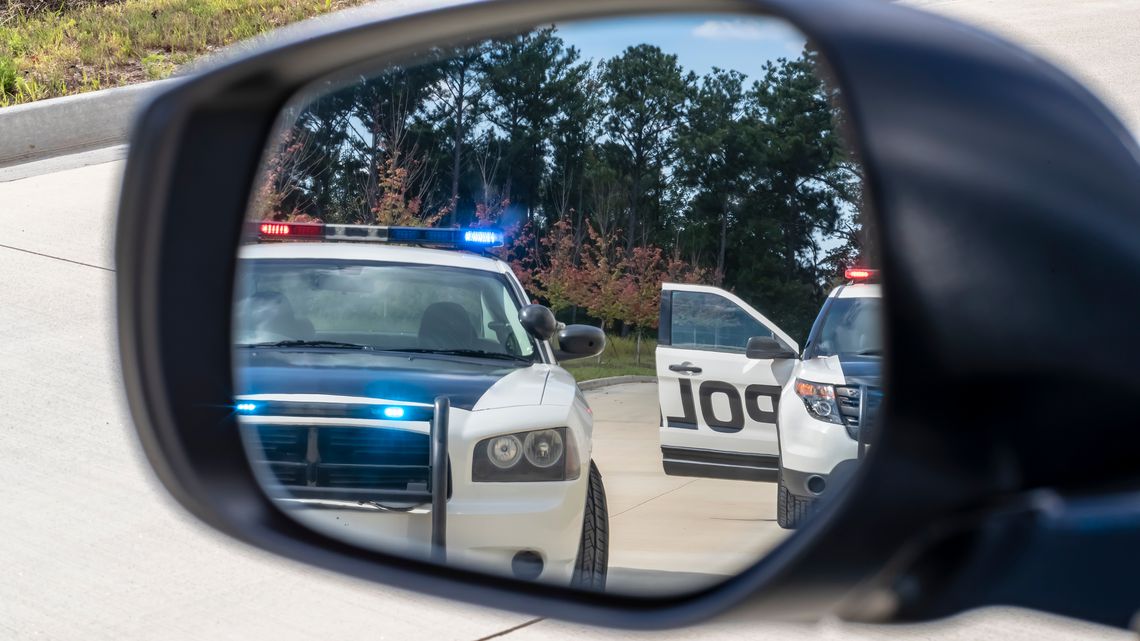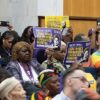By Kavitha Surana, Tampa Bay Times
Some states require law enforcement agencies to collect comprehensive traffic stop data for accountability. Not in Florida.
Across Tampa Bay, law enforcement agencies say they take concerns over racial profiling seriously.
But when the Tampa Bay Times requested comprehensive traffic stop databases from six major police departments and sheriff’s agencies in the area — statistics readily available in some U.S. jurisdictions and that experts say is necessary for a thorough analysis — none could provide them.
Three agencies shared reports that captured demographic breakdowns of citations and warnings, a limited view of total traffic stops.
More data could be pulled from citations, but officials said that would be time-consuming and costly.
Agencies said they can quickly investigate any racial bias complaint, using police records and body cameras.
But officials said that type of investigation is rare.
“Since implementing body-worn cameras (last August), only a single complaint of racial profiling was received, investigated and determined to be unfounded,” Hillsborough Sheriff Chad Chronister said.
Criminal justice researchers say collecting deeper data on all traffic stops allows agencies to identify disparities and patterns that go beyond individual complaints. And they say making that information easily accessible to the public is crucial for accountability. Increasing accountability and transparency have been persistent demands in the wake of protests sparked by George Floyd’s murder.
“Rigorous data analysis sets the table for a frank and robust community conversation about next steps,” said Hilary Rau at the Center for Policing Equity, a research and advocacy think tank. “It’s really not possible to gauge the full burden on non-white communities, or the community more generally, if we don’t know the full breadth of who is being stopped.”
“A legal framework for investigating people”
Pretext stops — using a minor traffic offense to stop and question someone — is legal, and officials sometimes call it “proactive policing.” They argue that it allows officers to better combat crime in neighborhoods with drug trafficking and gun violence.
Critics, including researchers and some police chiefs, say the strategy has often done little to clean up crime and instead disproportionately harmed communities of color and eroded their trust in police. Black drivers who commit low-level infractions are more often ensnared into the court system than white drivers.
A heavy-handed “war on drugs” strategy, they say, also led to needless harassment of people of color.
“The vast majority of people subjected to searches are not arrested and are let go — but the search is humiliating, time-consuming and frustrating and shows you the officer views you as a criminal suspect, not just someone in a hurry to get to work,” said Frank Baumgartner, a political science professor at the University of North Carolina and author of Suspect Citizens: What 20 Million Traffic Stops Tell Us About Policing and Race.
“The traffic code has become a legal framework for investigating people,” he said. “But middle class white people are not affected by this.”
In the worst cases, police encounters that began as traffic stops ended in deaths.
Five years ago, Philando Castile, a 32-year-old school cafeteria worker, was pulled over in a suburb of St. Paul, Minnesota, for a broken taillight and because an officer thought he looked like a robbery suspect. He was fatally shot after notifying the officer he had a licensed firearm in the car.
The officer said he feared Castile was reaching for his gun. Castile’s girlfriend said he was reaching for his identification.
Before that, Castile had been stopped at least 49 times, mostly for minor violations.
This year, Daunte Wright, 20, was stopped in Brooklyn Center, Minnesota, initially for an expired registration tag. When officers found he had a warrant, he tried to flee and an officer fatally shot him. The officer later said she meant to use her Taser.
Investigations into racial profiling date to 1989, when reporters found that 80 percent of drivers stopped by state troopers on a New Jersey turnpike were Black and Latino.
Evidence across the country has piled up since then. The Justice Department has repeatedly ordered agencies to end racial profiling practices.
But a 2020 study drawing on nearly 100 million traffic stops across the United States found that Black drivers were still about 20 percent more likely to be stopped than white drivers relative to their share of the population.
Once stopped, Black drivers were searched nearly twice as often as white drivers, the study found, but officers were less likely to find contraband, like drugs and guns.
Locally, a 2015 Tampa Bay Times investigation revealed the Tampa Police Department was encouraging officers to disproportionately target poor, Black neighborhoods for bike stops. Eighty percent of tickets went to Black people.
A subsequent report by the federal government found the tactic didn’t work to reduce crime or curb bicycle thefts. It recommended reducing stops and carefully documenting reasons for them.
In response, the department created an interactive dashboard that updates weekly and tracks date, location and outcome of bike stops by race.
No similar dashboard exists for traffic stops.
When asked, the agency shared that over six months ending in May, officers made more than 17,000 stops and issued 9,000 tickets. Of those tickets, roughly one third went to white drivers and one third to Black drivers — though only about one fifth of Tampa’s population is Black.
The agency said it also could export more information from citations, for a processing fee.
Information about searches is kept in a separate database and would require extensive review and redaction to be released and cost even more, a spokesperson for the agency said.
James Shaw, an attorney with the Florida American Civil Liberties Union, says more data might affirm what he sees anecdotally. Over the years, he has received letters from people complaining they were pulled over and intimidated into a search.
”I’ve never gotten that letter from a white person,” he said.
“Eyeballing data”
In St. Petersburg, Police Chief Anthony Holloway says he has taken steps to monitor traffic stops for signs of disparity.
Soon after he became chief in 2014, Holloway began issuing a yearly report tracking citations and warnings by race. That data is not posted online but shared with the Civilian Police Review Board and accessible to anyone who makes a public record request. The Clearwater Police Department issues a similar report.
In 2018, Holloway went further, after hearing concerns from local faith leaders, and created a monthly report of all traffic stop data, including those that did not end with citations or warnings.
“If all I see is African Americans being stopped on Snell Isle, then I have an issue with that,” he said. “Or if I saw more African Americans being stopped in District 2, then I would probably ask for a deeper dive.”
But that data is impossible to scientifically analyze for racial bias, according to four data experts the Times consulted.
The data is collected through dispatch calls and includes race, gender, district, date and time. The reason for the stop also is recorded but limited to three categories: moving violation, non-moving violation or investigatory.
It doesn’t capture specifics about outcomes or why officers stopped drivers.
“The chief just kind of takes a look and says — let’s look at these districts, does it make sense?” said Yolanda Fernandez, an agency spokesperson. “There is no specific data point. If you live here, you know it’s just kind of the way the city is.”
Experts who reviewed the department’s data said it was little use for understanding the dynamics of racial profiling or potential disparate impacts in the community. Even if officers are not explicitly profiling, an enforcement strategy might have an unequal impact that deserves more scrutiny, they said.
“Looking at data is good, but eyeballing data is not data analysis,” said Rau of the Center for Policing Equity.
She said collecting more details about why a stop was made, including whether there was a search and if anything was found, would give a clearer understanding of any possible impacts on communities of color.
Tracking the success rate of searches can be a powerful data point, she said.
“If we see a department that has high rates of searches for non-white people, but those searches are far less productive than searches of white people, that can be an indicator of bias,” Rau said.
She also recommended using location data. Agencies will often say numbers are higher in certain neighborhoods because there’s more crime. Census data allows researchers to control for those factors, she said.
Baumgartner, the University of North Carolina professor, reviewed St. Petersburg’s data from 2018-2020.
“In general, this database collects very little information compared to others I have seen,” he said. But it did raise a question, Baumgartner said: Black men were slightly more likely to be pulled over for non-moving and investigatory stops than moving violations.
“So they are not bad drivers but get caught up by the police for other reasons,” he said.
Without more data and research, he said, no conclusions can be drawn.
Additionally, the dataset does not include investigatory stops that ended in charges.
That means all the investigatory stops included were fruitless, Baumgartner said. “Those are people who apparently didn’t deserve to be stopped, in retrospect.”
Laketta Davis, the chairperson of St. Petersburg’s Civilian Police Review Board, said the board finds the data sufficient and hasn’t heard outcry for more.
But Brother John Muhammad, president of the Childs Park Neighborhood Association, said residents in his community still feel unfairly targeted for low-level traffic violations, partly a legacy of past police administrations. He’d like to see an equity analysis.
“We’ve got to ask for more,” he said.
Even less
Other agencies in Tampa Bay do less than the St. Petersburg Police Department when it comes to data collection.
The Clearwater Police Department has been creating an annual report since 2010 that tracks citations and warnings by race but does not compile data monthly.
“I got a copy of (St. Petersburg’s) report, and I couldn’t see what it was really providing from a perspective of value,” said Clearwater Chief Dan Slaughter.
When asked, the Hillsborough County Sheriff’s Office, Pinellas County Sheriff’s Office, Pasco County Sheriff’s Office and Tampa Police Department all pointed to other methods of ensuring officers don’t racially profile: bias training and the ability to investigate individual complaints.
None of the agencies systematically collect traffic stop data in a way that can be quickly exported and analyzed.
The Hillsborough Organization for Progress and Equality, a coalition of religious and community organizations known as HOPE, has been pressing county agencies for more data collection. Every year, they hear stories from members of all ages and in different neighborhoods who believe they were unnecessarily stopped.
“My son is a Black male and he can be stopped five or six times a year with no citation or warning,” said Laurie Jones, a chairperson on HOPE’s criminal justice committee. “Where’s the record of that?”
Recently, the group invited Hillsborough leaders, including officials from law enforcement agencies, to meet with Jack McDevitt, a professor at Northeastern University’s Institute of Race and Justice.
McDevitt’s research team has conducted traffic stop studies in Massachusetts, Rhode Island and Kansas. He explained why his team needed information for all traffic stops, not just those that end in citations or warnings, to conduct a full review.
But Jones said HOPE members left angry — Tampa Police Chief Brian Dugan and Hillsborough Sheriff Chronister had sent representatives in their places, and those people asked few questions.
“It was evident the folks in attendance were not receptive,” she said. “What’s frustrating is that, in this day and time, with everything going on in this country, they still don’t want to track the data to show that everything is above board and officers are not stopping people inappropriately.”
Using data to assess policy
If Tampa Bay law enforcement agencies want to reassess data collection practices, many examples are available.
They can look to states that have adopted robust mandates, such as California, Illinois and Oregon.
In North Carolina, all patrol agencies have been collecting comprehensive data since 2000.
Officers across the state use the same paper sheet to record traffic stops. They check off: initial reason for the stop, gender, race and ethnicity, enforcement actions taken, whether physical resistance was encountered, whether a search was conducted, basis for the search, whether anyone else in the car was searched, whether contraband was found or property seized.
Tampa Bay agencies also can look within the state. The Florida Highway Patrol collects data on demographics, reason for stop, whether a citation, warning or arrest was made, and whether a search was performed.
The Center For Policing Equity published a guidebook that lays out best practices, including the pros and cons of different methods of data collection and how to best analyze it.
“We probably could look at that, if that’s something that the community wants to know,” Holloway said.
Slaughter said his department is looking for a new computer-aided dispatch system that could capture more data, including information about searches. He believes traffic stop analysis should include comparisons with crime and poverty data, not just population breakdowns.
“I am not scared of the data,” he said, “more than happy to collect it.”
Experts said comprehensive data collection alone does not provide answers or policy solutions. But it can help identify harmful dynamics and spark reassessments of police practices and taxpayer spending.
In North Carolina, the extra information collected since 2000 sat in a database with no analysis for more than a decade. Then, in 2012, Baumgartner’s research team took up the task.
It found that Black drivers were twice as likely to be searched as white drivers but less likely to get a citation when they were pulled over. This suggested the reasons they were stopped were unrelated to the traffic code, Baumgartner said. It helped pinpoint where disparities were taking place, he said, and led some chiefs to pull away from pretext stops.
In two cities, Fayetteville and Durham, officers are now required to obtain written consent for consensual searches. They present drivers with a paper that informs them the search is voluntary and no action will be taken against them if they choose to go.
Other localities also are re-assessing policing strategies.
In Virginia, as of this year, officers can no longer use infractions like a broken light, defective equipment, air fresheners, tinted windows or loud exhaust as a primary reason for pulling someone over and can only stop drivers for expired registrations if they are more than four months late. Officers can no longer use the smell of marijuana as a reason to conduct a search.
In California, the city of Berkeley has removed police officers from traffic enforcement altogether, after a recent study by the Center for Policing Equity found that Black people were 6.5 times more likely to be pulled over than white people.
Those decisions evolved, Rau said, out of informed data analysis.
View the original story here.






